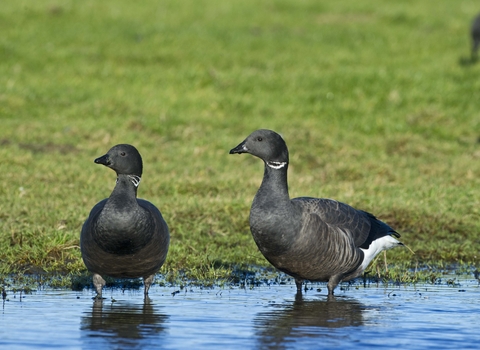
Brent geese © David Tipling/2020VISION
Brent goose
The brent goose flies to the UK for the milder winter. Two populations arrive: those with dark bellies can be found around Eastern England; while those with pale bellies can be found in the North East.
Scientific name
Branta berniclaWhen to see
October to MarchSpecies information
About
A common wintering bird, the brent goose is the smallest of our geese - it is only just bigger than a mallard. Brent geese gather in large flocks of hundreds of birds and, unlike other geese, do not fly in tight 'skeins' (V-formations).How to identify
Our smallest goose, the brent goose has a grey-brown back, and black neck and head, with just a small white patch on the neck.Distribution
Only found here in the winter. Birds that nest in northern Russia and Siberia have darker bellies, and spend the winter around the coasts of East Anglia and southern England. Birds that nest in Svalbard and Greenland have paler bellies and mostly spend the winter around North East England and Ireland.Did you know?
The brent goose is the most coastal of our geese, feeding mainly on eel-grass and seaweed on sandy estuaries and saltmarshes.Watch
Brent Goose by Russell Savory (https://vimeo.com/442070843)
Brent Goose by Russell Savory
